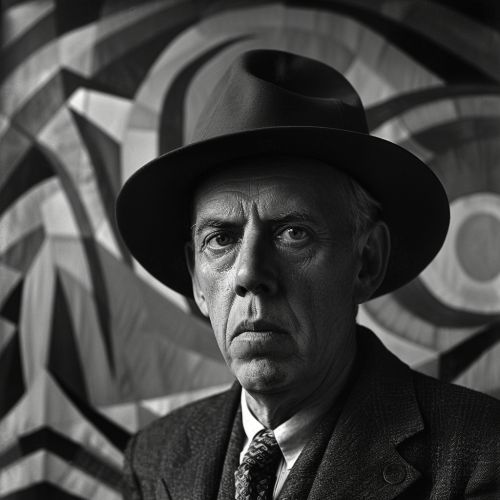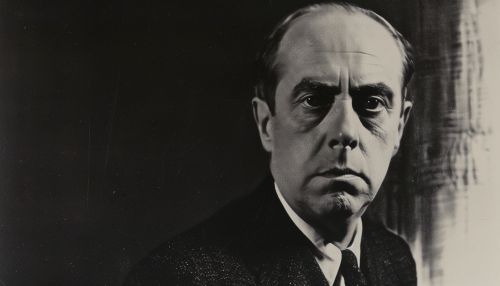Theo van Doesburg
Early Life and Education
Theo van Doesburg was born as Christian Emil Marie Küpper on August 30, 1883, in Utrecht, Netherlands. He was the son of the photographer Wilhelm Küpper and Henrietta Catherina Margadant. After a short training in acting and singing, he decided to become a painter. He always regarded his stepfather, Theodorus Doesburg, to be his natural father, so that his first works are signed with Theo Doesburg, to which he later added the insertion 'van'.


Career and De Stijl
Van Doesburg's first exhibition was in 1908. He was deeply influenced by the modernist movements of the time, including impressionism, neo-impressionism, and the art nouveau. However, he sought to move beyond these movements to create a new kind of art. This led him to become one of the founders of the De Stijl art movement in 1917, along with Mondrian and others. The movement was characterized by a reduction to the essentials of form and color, with simple geometric shapes and primary colors.
Contributions to Architecture and Design
Van Doesburg's work extended beyond painting into architecture and design. He believed that all arts should be unified and worked with architects like J.J.P. Oud and Gerrit Rietveld to incorporate his abstract, geometric style into architectural design. His most significant architectural project was the design of the Café Aubette in Strasbourg, where he worked with Sophie Taeuber-Arp and Jean Arp.
Later Life and Death
In the late 1920s, van Doesburg moved away from De Stijl and developed his own style known as Elementarism, which was characterized by diagonal lines and dynamic compositions. He died on March 7, 1931, in Davos, Switzerland, from a heart attack.
Legacy
Van Doesburg's legacy extends beyond his own work. He was a significant influence on the Bauhaus school and the International Style in architecture. His ideas about the integration of art and life continue to influence artists and designers today.
